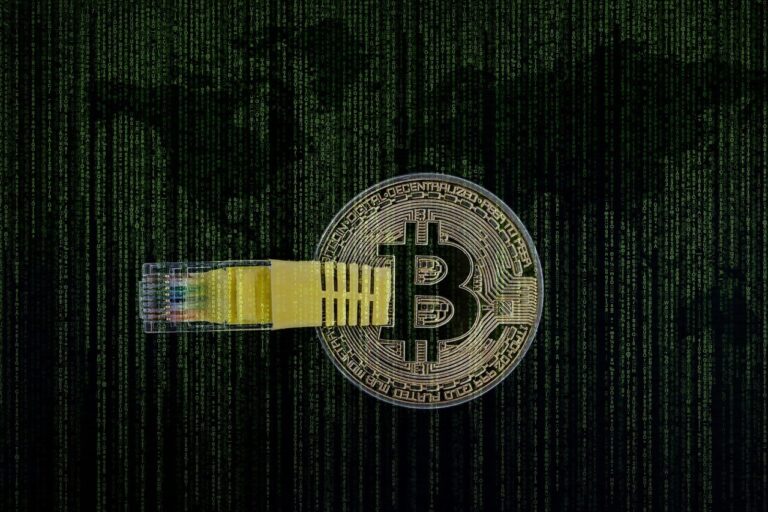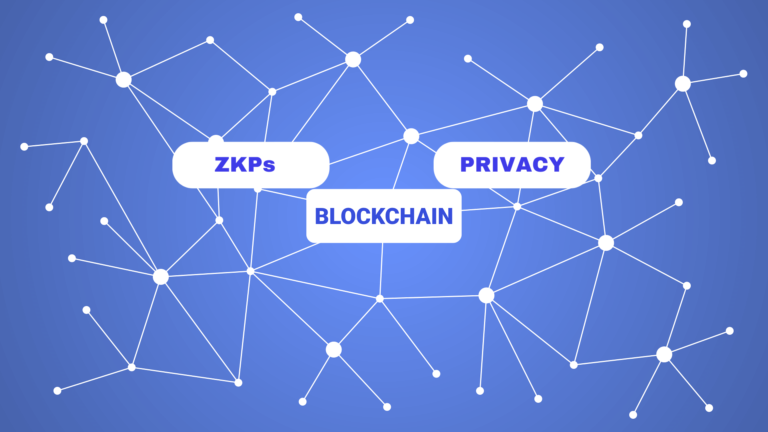What is Regenerative Finance (ReFi): How It Works [The Hidden Truth]
Regenerative Finance (ReFi) blends blockchain and sustainability to build a fairer, greener financial system. Learn how ReFi drives positive impact through Web3 innovations.
Web3 and blockchain technology have created exciting opportunities in finance over the past decade. Cryptocurrency has become widely recognized with growing adoption. It allows people to operate beyond traditional financial systems.
One emerging concept in this space is Regenerative Finance (ReFi). This approach combines Decentralized Finance (DeFi) with goals that benefit society and the environment, such as reducing carbon emissions. ReFi aims to integrate care for communities, ecosystems, and the planet into the core of our economic systems. Unlike traditional models that deplete resources and focus on profit, ReFi promotes economic activities that support all living participants.
Although ReFi is still in its early days. It has the potential to reshape how finance can be used as a tool to sustain life and foster a thriving planet.
What is Regenerative Finance
Regenerative Finance (ReFi) brings a fresh perspective to the financial world. Its goal isn’t just to grow wealth but to promote sustainability, resilience, and renewal. ReFi seeks to build economic systems that prioritize restoring and improving social, environmental, and economic health over mere financial gains.
It also emphasizes accountability. Firms must prove their commitment to real ‘green’ initiatives, while individuals can verify these claims. This approach encourages genuine change and helps prevent deceptive practices like ‘greenwashing.’
Regenerative Economy
Regenerative economic theories focus on uplifting communities and healing nature by tackling problems like poverty, inequality, and environmental damage.
The approach encourages mindful spending, efficient resource use, and prioritizing well-being over endless growth. A regenerative economic system aims to restore and renew natural resources, creating a balance between economic activity and environmental care.
Instead of exploiting the planet for short-term benefits, this system seeks long-term prosperity for everyone. Businesses and individuals are encouraged to think beyond profits and work towards the well-being of the planet and its people.
Comparison of Conventional vs. Regenerative Economic Systems:
| Conventional System | Regenerative System |
| Value is extracted for profit. | Value flows back to communities and the planet. |
| Focus on exponential growth. | Focus on healthy, sustainable growth. |
| Systems serve capital. | Systems serve people and the planet. |
| Growth harms the environment and communities. | Growth enhances the health of both. |
| More activity depletes resources. | More activity leads to regeneration. |
| Financial health is isolated. | Financial health is tied to societal and environmental well-being. |
READ ALSO: Top Security Tips for Trading on Decentralized Exchange (DEX)
READ ALSO: What Is DeFi (Decentralized Finance) And How It Works
READ ALSO: How Zero-Knowledge Proofs Enhance Blockchain Privacy
Principles of Regenerative Finance
Holistic Approach
Regenerative finance considers the connections between financial systems, society, and the environment. It recognizes that financial decisions create ripple effects that go beyond immediate profits or losses.
Positive Impact
Regenerative finance prioritizes actions and investments that contribute to environmental renewal, empower communities, and promote social fairness. Its goal is to leave a lasting, positive mark on the world.
Sustainability
Funding focuses on initiatives that restore nature and foster long-term ecological balance. This includes supporting renewable energy, sustainable agriculture, and green technology projects.
Societal Impact
ReFi aims to reduce inequality and improve community welfare. It supports efforts to provide education, healthcare, affordable housing, and job creation for underserved populations.
Long-Term Vision
Decisions are made with the future in mind. Instead of chasing short-term profits, ReFi encourages building stable and resilient economic systems that endure over time.
Accountability and Transparency
Regenerative finance demands clear and honest practices. Businesses are expected to share their sustainability efforts, and investors are urged to consider the societal and environmental outcomes of their choices.
Community Involvement
Local communities play an important role in shaping decisions. ReFi values their knowledge and insight to address unique challenges and needs effectively.
How Regenerative Finance Works
Regenerative finance (ReFi) focuses on funding projects that promote sustainability, environmental restoration, and community well-being. It supports areas like renewable energy, sustainable farming, and reducing waste through circular economy principles. This approach encourages long-term thinking and empowers communities to make meaningful changes.
ReFi in Action: Decentralized Green Bonds
Decentralized green bonds are an example of how ReFi works. These financial instruments are issued on blockchain platforms and align with sustainability goals:
- Global Participation: Investors across the world can directly buy bonds on decentralized platforms without needing a middleman.
- Smart Contracts: The bonds are managed through smart contracts, which outline terms such as interest rates and repayment schedules.
- Tokenization: Blockchain technology issues digital tokens representing ownership of the bond. For instance, each token may represent an investor’s stake in a solar energy project.
- Sustainability Monitoring: Tools built into these bonds track and verify that the funds are used for eco-friendly initiatives.
- DAO Governance: Stakeholders can participate in decision-making through decentralized autonomous organizations (DAOs). For example, tokenholders may vote on which projects should receive funding in future bond offerings.
Circular Finance Models and the Regenerative Economy
Circular finance models are at the heart of ReFi, aiming to replace wasteful, linear systems with closed-loop practices. These models ensure resources are reused, regenerated, and preserved.
Key Elements of Circular Finance:
Resource Efficiency
- Supports minimizing waste and extending the life of products and assets.
- Promotes financial savings and reduces environmental harm.
Economic Regeneration
- Invests in local businesses, sustainable farming, and green innovations.
- Helps rebuild community economies while fostering eco-friendly practices.
Sustainability Metrics
- Evaluates investments based on environmental and social impacts, not just financial returns.
- Provides insights to ensure alignment with regenerative principles.
Examples of Circular Finance in Action:
- Funding companies that create eco-friendly products or rely on sustainable practices.
- Supporting projects like recycling infrastructure to reduce waste and encourage material reuse.
- Assisting businesses with circular supply chains that produce long-lasting and recyclable goods.
Regenerative Finance in Web3
Web3 integrates regenerative finance (ReFi) to build a financial system that values sustainability and social impact. Here’s how it works:
Supporting Green Investments with Transparency
Web3 platforms simplify green investing. Individuals and organizations can directly fund eco-friendly projects such as renewable energy, sustainable farming, and green technology. Blockchain ensures that funds go directly to these initiatives, cutting out intermediaries. Investors can track the environmental and social impact of their contributions in real time, fostering accountability and trust.
Decentralized Green Bonds and Microfinance
Web3 facilitates the creation and trading of decentralized green bonds to finance sustainable projects. Smart contracts handle all transactions, from issuance to interest payments, ensuring transparency. Similarly, cryptocurrency-based microfinance enables peer-to-peer lending for small-scale regenerative projects. This opens up opportunities for underserved communities to access funding for sustainability-driven goals.
Sustainable Staking and Yield Farming
DeFi users in Web3 can stake or lend liquidity to support projects that benefit the environment. These systems reward users financially while contributing to efforts like reforestation, renewable energy, or sustainable infrastructure.
Community-Led Initiatives and Governance
Web3 empowers communities to shape ReFi projects through decentralized governance tools like DAOs. Community members can vote on funding allocation and project development, ensuring local priorities and values guide decision-making.
Regenerative Tokens for Real-World Impact
Web3 introduces regenerative tokens tied to physical assets like carbon credits or renewable energy certificates. These tokens offer transparency and traceable ownership, helping promote sustainability while allowing investors to participate in a regenerative economy.
Conclusion:
Regenerative Finance (ReFi) reimagines the financial system by prioritizing sustainability, social fairness, and environmental care. Through blockchain and Web3 technologies, ReFi enables direct investments in green projects, fosters community-driven decision-making, and ensures transparency in funding. This approach transforms finance into a tool for positive impact, addressing global challenges while creating long-term economic and ecological balance.






![Crypto Wallets: How to Recover Lost Wallets [Hidden Secrets]](https://finance360.ng/wp-content/uploads/2024/12/e-wallet-6368676_1280-768x591.png)
